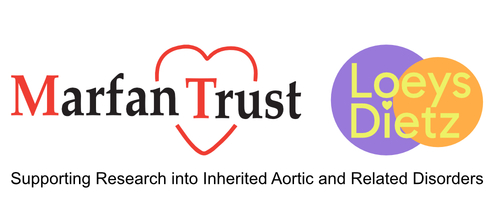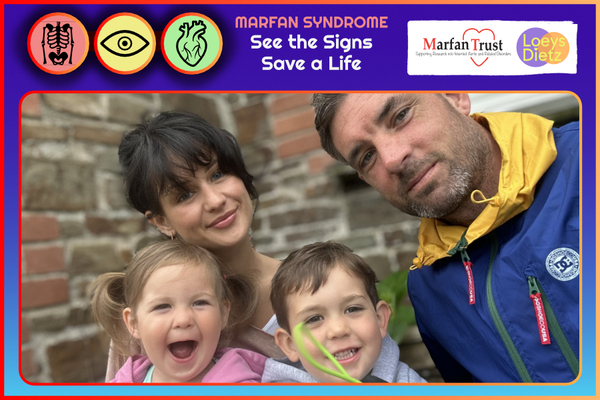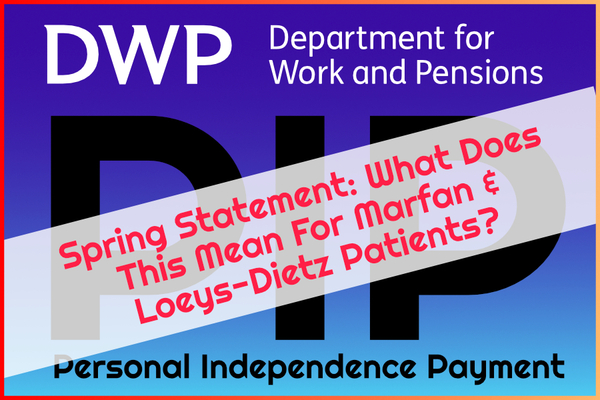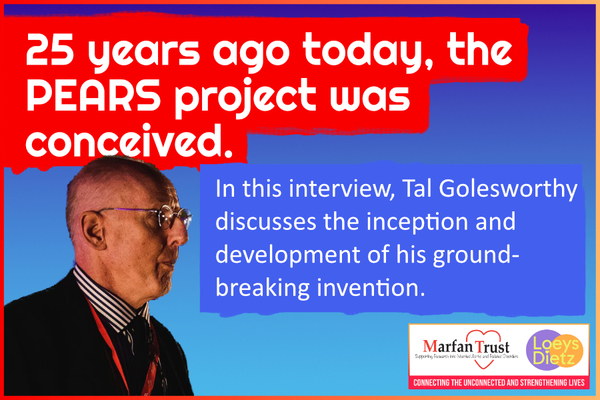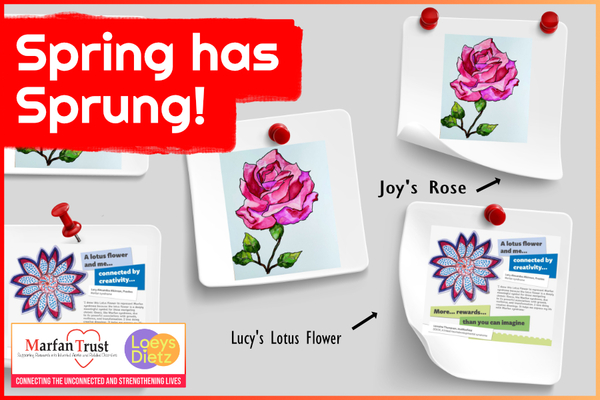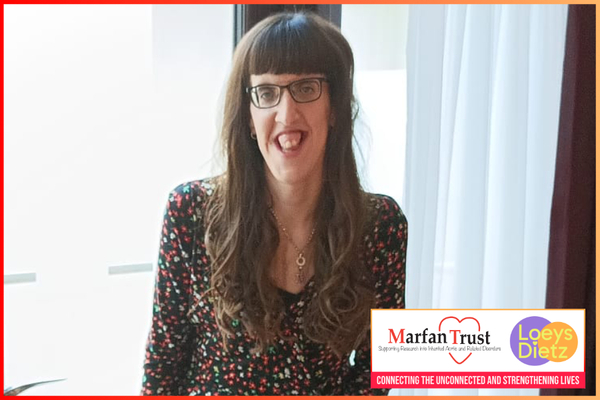Turning to Google for health advice isn't always wise but in this case it saved a life. Wayne struggled with a series of worsening symptoms that were treated independently rather than as a unified whole. Armed with an A4 sheet scrawled with concerns, his fiancée Amy connected the dots just in time ....
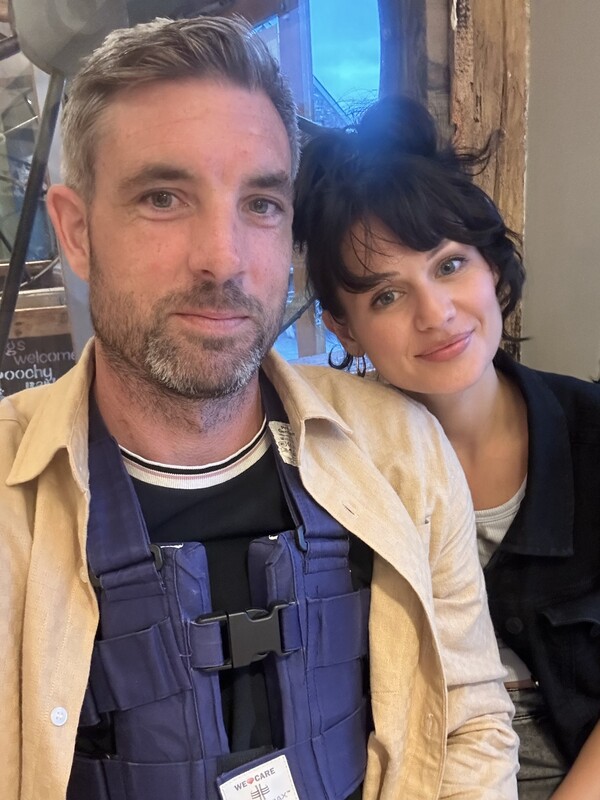
Wayne’s Journey to a Loeys-Dietz Syndrome Diagnosis
Wayne grew up relatively healthy, with only a few seemingly minor health concerns. Looking back now, if these issues had been connected sooner, he could have been diagnosed earlier—potentially preventing the trauma that unfolded in 2024 at age 36.
As a child, Wayne visited doctors for various symptoms: IBS, joint pain (dismissed as “growing pains”), pectus carinatum (a chest wall deformity), and overcrowded teeth. Yet, he lived a normal childhood, doing everything a typical teenage boy would (and more ..!) without significant health struggles.
The Onset of Symptoms
In his mid-20s, Wayne’s health began to decline, with new symptoms appearing one by one.
• His neck seized up, causing chronic pain that persists to this day.
• His knees began subluxing (partially dislocating) regularly.
• He underwent surgery on his wrists for a ligament issue.
• Chronic joint and bone pain set in, accompanied by insomnia and debilitating headaches.
After multiple GP visits, he was diagnosed with fibromyalgia by a rheumatologist. At the time, it felt like a relief to have an answer—but in hindsight, it only masked the true diagnosis.
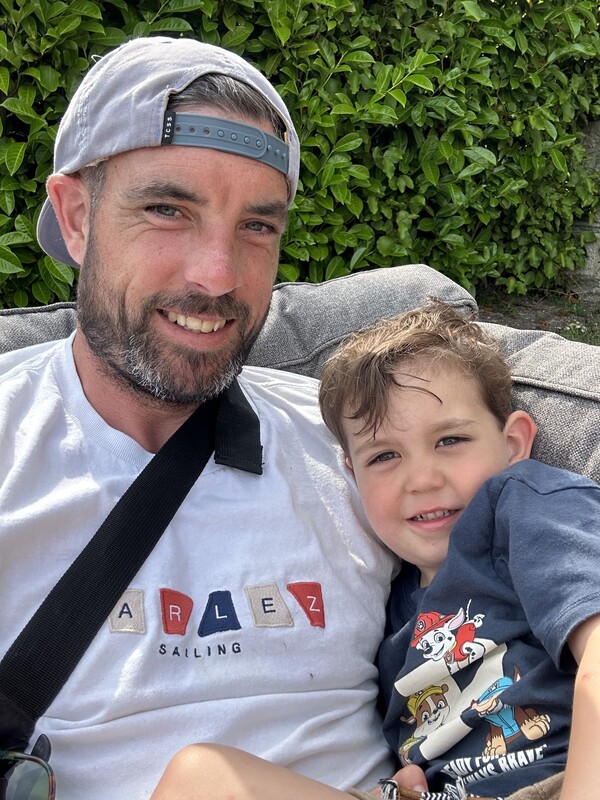
Something Didn’t Feel Right
Years passed, and despite pain management courses, Wayne never quite fit in with others diagnosed with fibromyalgia. His condition worsened—chest pain, palpitations, and frequent flu-like flare-ups became part of daily life.
Desperate for answers, I turned to Google (not always the best idea, but in this case, it saved Wayne’s life!). By connecting some of our children’s health concerns with his symptoms, I came across Marfan syndrome & Loeys Dietz syndrome —both conditions that I had never heard of but that described Wayne almost perfectly.
Here were his symptoms (although there are many more for the conditions)
✅ Pectus carinatum – chest protrusion
✅ Hypermobile joints – legs bending backward at the knees
✅ Joint subluxations & ligament laxity
✅ Double-jointed fingers & wrists
✅ Arm span longer than height by 4 inches
✅ Overcrowded teeth & high-arched palate with a groove
✅ Bifid uvula – a split uvula (the little thing that hangs at the back of the throat)
✅ Flat feet, rolled-in ankles & hammer toes
✅ Palpitations & mild chest pain
✅ IBS symptoms
✅ Chronic bone, joint & muscle pain
✅ Chronic fatigue & insomnia
✅ Frequent, unexplained flu-like flare-ups
✅ Atrophic scarring – scars that don’t heal well or appear thin/wide
Individually, these symptoms might seem minor. But together, they painted a much bigger picture.
A Dismissed Concern That Almost Cost His Life
Armed with an A4 sheet listing Wayne’s symptoms and research, we visited the GP. Unfortunately, the doctor was dismissive but reluctantly referred him to a cardiologist—without any clear timeframe.
That same week, Wayne’s condition deteriorated drastically. He was barely able to carry out daily activities, lying on the sofa in pain. Fearing the worst, I booked a private echocardiogram.
During the scan, I asked if everything looked normal. The sonographer hesitated, saying he’d go through it at the end. My heart sank—I knew something was wrong.
Then came the news that changed everything: Wayne had a 6.9cm aortic aneurysm. An ambulance was called immediately, and he was taken to the hospital to have open-heart surgery.
The Surgery That Should Have Happened Years Earlier
Doctors were now fascinated by Wayne’s symptoms. He underwent a valve-sparing aortic root replacement, a 7-hour procedure at Southampton by a brilliant surgeon, Mr. Modi. While the surgery itself went well, recovery was complicated—Wayne had contracted COVID before the operation. Because of the urgency, they had no choice but to operate on day 5 of COVID, possibly leading to his severe post-op complications and an additional surgery.
Wayne spent six weeks in the hospital. Had he been diagnosed earlier, his surgery could have been planned, saving us and our family an awful lot of trauma and possibly a much smoother recovery.
Why Early Diagnosis Matters: Educating Medical Professionals
Wayne’s experience highlights a critical gap in medical awareness. His symptoms—many of which were textbook signs of a connective tissue disorder—were overlooked by multiple healthcare professionals over the years. GPs, optometrists, dentists, and physiotherapists are often the first point of contact for patients with Loeys-Dietz Syndrome (LDS), yet most have never even heard of it.
Had Wayne’s overcrowded teeth, bifid uvula, joint hypermobility, and chest wall deformity been recognized as potential markers of a genetic disorder by his childhood dentist or physiotherapist, he could have been referred for genetic testing years ago. That referral could have led to monitoring, early intervention, and a planned surgery before his aortic aneurysm became life-threatening.
Raising awareness among both the general public and medical professionals is key to preventing more stories like Wayne’s. That’s why we are now fundraising not only for research but also for targeted education efforts—ensuring that GPs, dentists, physiotherapists, and optometrists have the knowledge they need to recognize LDS and refer patients for further testing before it’s too late.
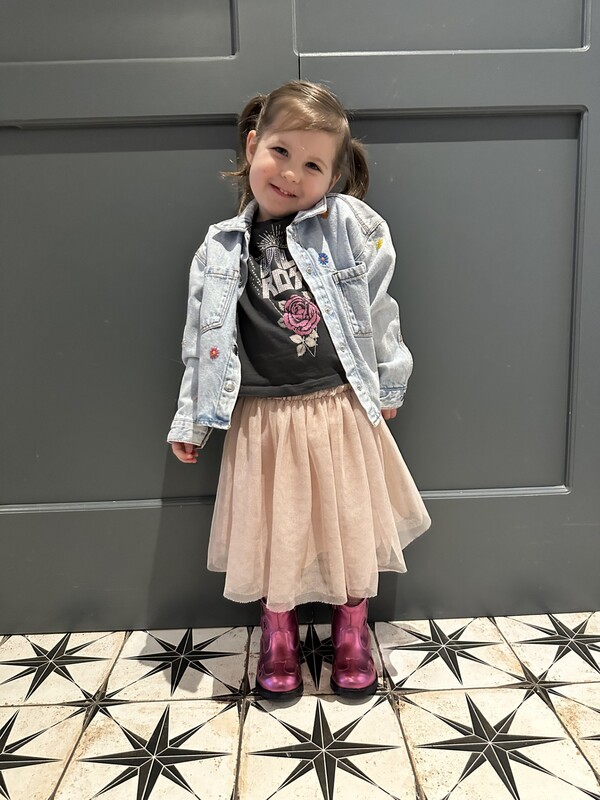
Moving Forward: Spreading Awareness & Saving Lives
Wayne’s story is a testament to the importance of early diagnosis, self-advocacy, and awareness. If we hadn’t pushed for answers, I truly believe he wouldn’t have seen 2025. This experience has changed our lives forever, but it has also given us a new mission—to ensure that others don’t go through the same battle alone.
Since Wayne’s diagnosis, our daughter Mahri has also been diagnosed with Loeys-Dietz syndrome, proving just how critical awareness is for families like ours. The more people who recognize the signs, the more lives that can be saved before it’s too late.
That’s why we are now dedicated to raising awareness and funds for the incredible charity, The Marfan Trust, which provides essential research and support for those affected by connective tissue disorders.
👉 How You Can Help
✅ Share this story—you never know who might need to hear it.
✅ Educate yourself and others about Loeys-Dietz syndrome and similar conditions.
✅ Support The Marfan Trust—every donation helps with vital research and early diagnosis efforts.
If Wayne’s journey can help even one person get diagnosed earlier and avoid the trauma we faced, then sharing our story has been worth it. Together, we can save lives.
Amy (Wayne’s fiancée)
